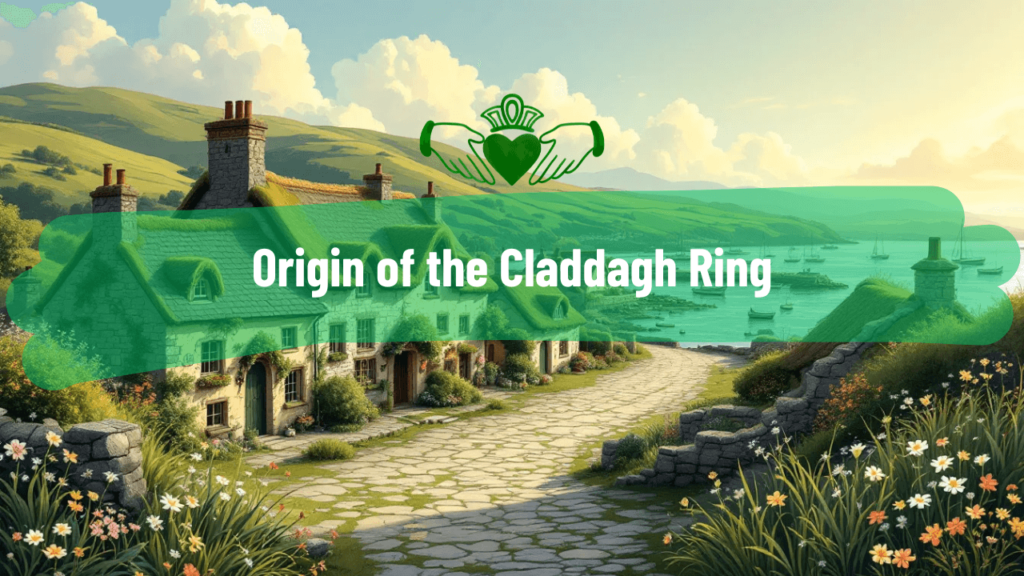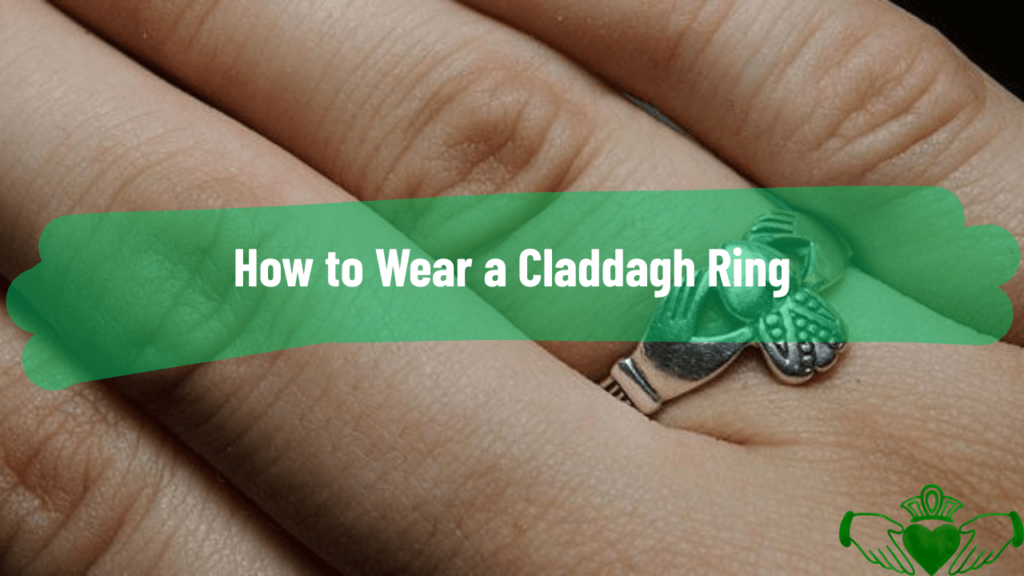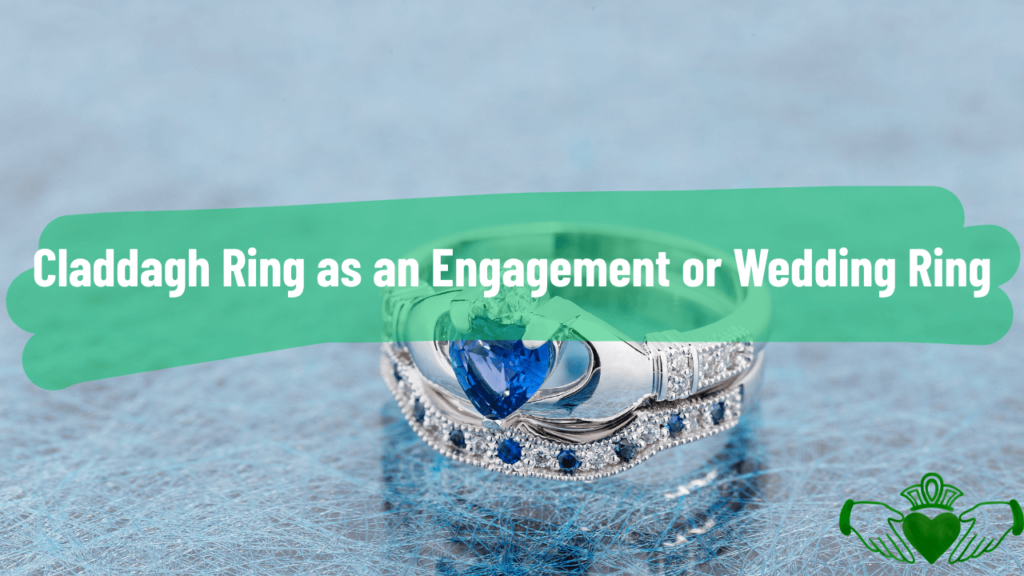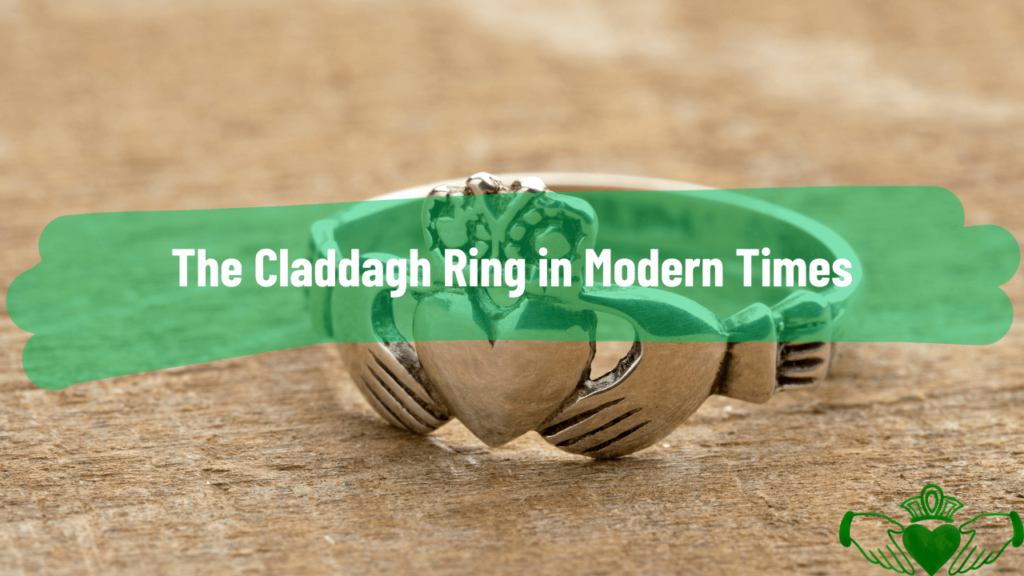The Claddagh ring is an iconic Irish symbol representing love, loyalty, and friendship. Its design features a heart held by two hands and topped with a crown. In this article, we’ll delve into the Irish ring Claddagh’s meaning, history, and customs of the Claddagh ring.
Key Takeaways
- The Claddagh ring symbolizes love, loyalty, and friendship, with its design consisting of a heart held by two hands and topped with a crown.
- Originating from the fishing village of Claddagh in Galway, the ring’s history involves Richard Joyce, who crafted the first ring after being enslaved and reflects deep Irish cultural significance.
- Wearing the Claddagh ring conveys relationship status, with specific orientations indicating whether one is single, in a relationship, engaged, or married, thereby adding personal meaning to the piece.
The Meaning of the Claddagh Ring

The Claddagh ring is much more than a piece of jewellery; it symbolizes profound significance in Irish culture. The Claddagh ring embodies love, loyalty, and friendship, deeply rooted in Irish tradition. The design is simple yet meaningful: a heart held by two hands and topped with a crown, representing the claddagh ring’s meaning.
The heart, as one might expect, signifies love. The hands signify friendship, gently cradling the heart, symbolizing love and friendship. Finally, the crown represents loyalty, a testament to enduring bonds and commitments. Together, these elements tell a story of unwavering affection and fidelity, making the Claddagh ring a cherished symbol of Irish culture and heritage.
This traditional Irish piece encapsulates the essence of Irish values. Whether used as a token of friendship, a promise ring, or a wedding ring, the Claddagh ring certainly possesses a magical quality that resonates with people worldwide. Word cladach, which describes its design, steeped in history and meaning, continues to be a beloved emblem of Irish culture and heritage. Wear your Irish claddagh; its design, steeped in history and meaning, is a beloved emblem of Irish culture and heritage.
Origin of the Claddagh Ring

The Claddagh ring’s origins trace back to the fishing village of Claddagh in Galway, Ireland, known for its rich maritime history. This distinctive Irish ring dates back to the late 17th or early 18th century, marked by tumult and transformation. The original Claddagh ring dates back to this time, and the story of the first Claddagh ring is as captivating as the ring itself. The Claddagh Ring’s history adds depth to its significance, as it originated in a fishing village.
Richard Joyce, a fisherman from Galway City, is credited with creating the original Claddagh ring. The story begins with pirates, and sold into slavery, Joyce found himself in a foreign land. It was during his enslavement that he honed his skills as a goldsmith. Upon his release in 1689, Joyce returned to Claddagh and presented the ring to his beloved, an Irish woman named Margaret, a gesture symbolizing his enduring love and commitment.
The Claddagh ring was initially associated with the ‘Fishing Kings of Claddagh,’ a title held by local leaders in the 17th century. This association added to the ring’s cultural significance, embedding it deeply within the fabric of Irish tradition. Understanding the origin of the Claddagh ring offers a glimpse into the rich tapestry of Irish history and its enduring symbols.
Historical Context
The Claddagh ring’s design is believed to have evolved from earlier Fede rings, featuring clasped hands as a symbol of friendship and trust. This evolution highlights the continuity of cultural symbols and how they adapt over time to reflect changing societal values and customs.
During the 17th century, the Claddagh ring was predominantly used by the ‘Fishing Kings of Claddagh,’ who ruled over the local fishing community. This title and its associated symbols underscored the ring’s importance in local governance and social structure. Richard Joyce, the man behind the original Claddagh ring, crafted it during his captivity, infusing it with personal and cultural significance.
As a symbol of Irish tradition, the Claddagh ring has travelled a remarkable journey through history. Its enduring design and the values it represents—love friendship and loyalty, and friendship—have ensured its place in Irish culture and beyond. If you want to know about the claddagh, understanding this historical context enriches our appreciation of this timeless piece of jewellery.
How to Wear a Claddagh Ring

Before: How you wear a Claddagh ring is not just about style; it also conveys your relationship status. This traditional Irish ring can communicate whether you are:
- Single
- In a relationship
- Engaged
- Married
How you position the heart and on which hand you wear the ring depends.
If you are single and looking for love, you should wear the Claddagh ring on your right hand with the heart facing outward. This signals that your heart is open to new relationships. On the other hand, if you are in a committed relationship, the ring should be worn on the right hand with the heart facing inward, symbolizing that your heart is taken.
Engagement is signified by wearing the Claddagh ring on the left hand with the heart facing outward, indicating a promise to someone. After marriage, the ring is worn on the left hand with the heart facing inward, symbolizing that your heart is forever spoken for.
These customs around wearing the ring add layers of meaning to this cherished symbol of Irish culture, and individuals may wear the ring as a testament to their heritage. An Irish piece of jewellery can also represent this connection. This piece encapsulates Irish tradition. An Irish ring has centuries of significance. Irish culture touches everything.
Claddagh Ring as an Engagement or Wedding Ring

The Claddagh ring’s symbolism of love, loyalty, and friendship makes it a perfect choice for engagement and wedding rings. Many couples choose the Claddagh ring as an engagement ring, drawn by its meaningful design and rich history. The ring’s heart, hands, and crown beautifully represent the commitment and affection shared between partners.
Some couples use the Claddagh ring as a pre-engagement ring to promise their future together. Claddagh rings are not uncommon to be exchanged during wedding ceremonies, often as part of a Celtic handfasting ritual, which symbolizes the couple’s union.
Over time, the Claddagh ring has become a popular token for engagements and weddings. Its timeless design and deep symbolism resonate with modern couples, making it a cherished choice for those looking to honour their Irish heritage or appreciate a piece of jewellery rich in tradition, such as an Irish claddagh ring.
The Claddagh Ring in Modern Times

The Claddagh ring has come a long way from its origins in Galway. Starting in the mid-20th century, it began to gain prominence beyond Ireland, mainly as the Irish diaspora spread worldwide. Today, the Claddagh ring is a widely recognized emblem of love, loyalty, and friendship in various cultures.
This traditional Irish piece is often gifted during milestone events like anniversaries and weddings, reinforcing its role as a token of affection and commitment. Couples frequently exchange Claddagh rings as a sign of their enduring bond, and the ring’s profound yet straightforward design continues to resonate across generations.
Today, the Claddagh ring symbolizes resilience and unity. The ring was widely adopted after the September 11th attacks as a symbol of solidarity and hope. Its design, from silver bands to intricate rings with precious stones, ensures it remains a beloved and versatile piece of Irish jewellery.
Family Heirlooms and Traditions
Claddagh rings are often more than just personal adornments; they are cherished family heirloom pieces passed down through generations. These rings symbolize family connections and heritage, reinforcing the bonds between different generations.
Claddagh rings are a common tradition to be given from mothers to their eldest daughters, which helps preserve family history and cultural identity. Each transfer of the ring carries the stories and memories of those who wore it before, adding layers of emotional and cultural significance.
Passing down a Claddagh ring is a way to honour and preserve Irish ancestry and cultural identity. This tradition ensures that the values of love, loyalty, and friendship continue to be celebrated and cherished. The Claddagh ring certainly possesses a magical quality that connects families through time.
Discover Your Irish Roots
Discovering your Irish roots can be a profoundly enriching experience, connecting you with your Irish heritage, affinity and cultural identity. The Irish Family History Centre offers expert consultations and resources to assist with tracing Irish ancestry, making it easier to uncover the history of this Irish family.
Irish Genealogy provides free access to vital records such as birth, marriage, and death certificates. At the same time, the National Archives of Ireland is a key resource for accessing census records and other significant documents. The Public Records Office of Northern Ireland (PRONI) holds crucial historical records for those with Northern Irish ancestry.
RootsIreland offers searchable indexes for various genealogical documents such as marriage and birth records, enhancing your journey in connecting with your Irish ancestry. Utilizing these resources helps you discover your Irish roots and deepens your understanding of your Irish heritage and cultural identity.
Summary
The Claddagh ring is more than just a piece of jewellery; it is a rich symbol of love, loyalty, and friendship that has endured for centuries. From its origins in a small fishing village to its modern-day significance, the Claddagh ring encapsulates the essence of Irish culture and heritage. Understanding its history, meaning, and traditions allows us to appreciate this timeless symbol even more.
Embrace the Claddagh ring not just as a beautiful piece of jewellery, but as a connection to a storied past and a testament to enduring values. Whether you wear it as a symbol of your Irish roots or as a token of your commitment, the Claddagh ring’s message of love, loyalty, and friendship remains as powerful today as it was centuries ago.






